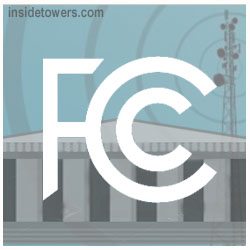By Leslie Stimson, Inside Towers Washington Bureau Chief
The FCC voted 5-0 Thursday to open up the entire 6 GHz band for unlicensed use. Much of the telecom industry is pleased, saying the mid-band spectrum (5.925–7.125 GHz) is crucial to expand WiFi and other wireless uses. But incumbent users, like AT&T, broadcasters and utilities, are not.
The 6 GHz band is currently populated by, among others, microwave services that are used to support utilities, public safety, and wireless backhaul. AT&T said the planned changes to the band could endanger microwave links. Broadcasters use 6 GHz for electronic news gathering (ENG). Stations, utilities, and public safety agencies, too, fear the move could disturb the band’s current uses with harmful interference.
Unlicensed devices will share this spectrum with incumbent licensed services under rules crafted to protect current users and enable both unlicensed and licensed operations to thrive throughout the band, according to the agency. Indeed, FCC Commissioners believe the Commission is taking the right steps to protect incumbents.
FCC Commissioner Michael O’Rielly, who has worked on the issue for years, said during the vote: “We are taking appropriate and defensible steps to free this resource.” The NAB proposed a compromise that involved reserving 80 MHz of the band for ENG use. O’Rielly disagreed with this approach, without naming any one set of incumbents. “Instead of doling it out in slivers or piecemeal we have the chance to provide” a larger amount of spectrum that can make a difference in terms of future technology, he said.
AT&T was disappointed with the outcome. “While we support use of this band for WiFi expansion, any new use must protect incumbent services, which in this case includes tens of thousands of microwave links critical to maintaining network infrastructure. This order does not do that,” said Joan Marsh, EVP of regulatory and state external affairs, for AT&T, reported Multichannel News.
“By failing to require that new WiFi devices using this band include smart technology that avoids interference, the FCC’s order will allow the introduction of devices that can impair, or even knock out, links in the networks that monitor our electric grid, enable first responders to communicate and provide mobile broadband services to millions of Americans, particularly in rural areas,” said Marsh. “Even more troubling is the fact that the FCC has no plan to mitigate the interference when it inevitably occurs. Once millions of these new unlicensed devices are released and in use, it will be impracticable, if not impossible, for the FCC to identify and remove specific devices causing interference. Ultimately, it will be public safety, our nation’s critical infrastructure and consumers that will pay the price.”
Contrast that with CTIA’s reaction: “Today’s decision brings even greater focus and importance on the Administration moving forward decisively to free up the lower 3 GHz band in order to address America’s growing mid-band spectrum deficit,” said CTIA President/CEO Meredith Attwell Baker in a statement. Scott Bergmann, SVP of Regulatory Affairs, added: “It is incumbent on the FCC to closely monitor new deployments to ensure unlicensed manufacturers live up to their obligations not to cause harmful interference to existing services, and take swift action when necessary to safeguard these links.”
“The NAB is disappointed the FCC is allowing uncoordinated unlicensed use across the entire 6 GHz band,” said NAB EVP Communications Dennis Wharton. “Unlike in other recent proceedings, the Commission did not bring stakeholders together to seek compromise. Moreover, the order represents an inexplicable departure from existing precedent. Rather than require unlicensed proponents to prove they will not cause harmful interference, the Commission shockingly forgoes any independent analysis that interference won’t be too bad or happen too often. This “fingers crossed” approach is bad policy and not what is required under law.”
Wharton continued: “The record does not remotely justify why the full 1200 MHz in the band is needed for unlicensed use in the near or long term. The COVID-19 crisis has prompted Americans to flock to credible, lifeline local television and broadcast network news in record numbers. If today’s FCC decision is wrong, it will irreparably undermine broadcast news gathering just as it is needed most.”
Chairman Ajit Pai told reporters after the vote, “there was a very careful calibration, as well as guarding against interference to incumbents” when the item was drafted. “We feel like we have struck an appropriate balance…while also making sure those incumbent uses will continue to thrive.”





Reader Interactions